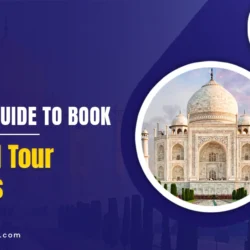India, the birthplace of Buddhism, continues to honor the teachings of Gautam Buddha through a rich tapestry of festivals and rituals. Buddhist Festivals in India are not only spiritual milestones but also cultural events that bring communities together in reflection, joy, and devotion. These festivals are celebrated across monasteries, temples, and cultural hubs—from the Himalayan heights of Ladakh to the sacred plains of Bodh Gaya. This guide explores the most significant Buddhist festivals in India, their origins, rituals, and regional variations.
1. Buddha Purnima (Vesak) – The Triple Blessed Day
Buddha Purnima, also known as Vesak or Buddha Jayanti, is the most important Buddhist festival. It commemorates the birth, enlightenment (Bodhi), and death (Mahaparinirvana) of Gautam Buddha—all believed to have occurred on the full moon day of Vaisakha (April–May).
- Where It’s Celebrated: Bodh Gaya, Sarnath, Kushinagar, Delhi, Dharamshala, and across Buddhist monasteries.
- Rituals: Devotees offer prayers, light lamps, chant sutras, and participate in processions. Temples are decorated with flowers and flags.
- Significance: It’s a day of reflection, compassion, and reaffirmation of the Eightfold Path.
2. Hemis Festival – Ladakh’s Grand Celebration
Held at the Hemis Monastery in Ladakh, this festival honors Guru Padmasambhava, the founder of Tibetan Buddhism.
- When: June or July (10th day of the Tibetan lunar calendar).
- Highlights: Masked dances (Cham), thangka displays, and vibrant rituals.
- Cultural Impact: It’s one of the largest and most colorful Buddhist festivals in India, attracting tourists and pilgrims alike.
3. Losar – Tibetan New Year
Losar marks the Tibetan New Year and is celebrated with great enthusiasm in regions with Tibetan Buddhist populations.
- Where: Ladakh, Sikkim, Arunachal Pradesh, Himachal Pradesh.
- When: February or March.
- Traditions: Cleaning homes, making offerings, performing dances, and preparing special dishes like khapse and thukpa.
- Spiritual Meaning: It’s a time to purify negativity and welcome blessings for the year ahead.
4. Torgya Festival – Monastic Protection Rituals
Celebrated at Tawang Monastery in Arunachal Pradesh, Torgya is a three-day festival aimed at warding off evil and bringing prosperity.
- When: January.
- Features: Monks perform Cham dances, rituals with sacred texts, and offerings to deities.
- Local Flavor: The festival includes community feasts and traditional music.
5. Kalachakra Festival – Teachings of Time and Peace
The Kalachakra Initiation, often led by the Dalai Lama, is a major spiritual event focused on world peace and inner transformation.
- Where: Bodh Gaya (most frequently), but also held in other global locations.
- When: Irregular intervals, based on the Dalai Lama’s schedule.
- Activities: Teachings, empowerment rituals, mandala creation, and mass meditation.
- Global Appeal: Attended by thousands of Buddhists from around the world.
6. Drukpa Tsezhi – Commemorating Buddha’s First Sermon
Celebrated in Ladakh and other Himalayan regions, Drukpa Tsezhi marks the day Buddha gave his first sermon at Sarnath.
- When: Fourth day of the sixth Tibetan lunar month (July).
- Rituals: Reading of scriptures, prayers, and community gatherings.
- Spiritual Focus: Emphasizes the Four Noble Truths and the Eightfold Path.
7. Lhabab Duchen – Buddha’s Descent from Heaven
Lhabab Duchen commemorates Buddha’s descent from the heavenly realm of Tushita after teaching his mother.
- When: October or November.
- Where: Celebrated in Tibetan Buddhist regions.
- Traditions: Lighting lamps, performing pujas, and engaging in acts of merit.
- Belief: Good deeds on this day are multiplied many times over.
8. Sangken Festival – Water Rituals in Northeast India
Celebrated by Theravada Buddhists in Arunachal Pradesh and Assam, Sangken involves ceremonial bathing of Buddha statues.
- When: April.
- Customs: Pouring water over Buddha idols, cleaning temples, and community feasts.
- Symbolism: Represents purification and renewal.
9. Uposatha – Observance Days
Uposatha are bi-monthly days of spiritual observance for lay followers and monks.
- When: Full moon and new moon days.
- Practices: Meditation, fasting, listening to sermons, and observing precepts.
- Purpose: Deepening one’s commitment to the Dhamma.
10. Asalha Puja – Dharma Day
Celebrated in July, Asalha Puja marks the day Buddha gave his first sermon at Sarnath.
- Where: Sarnath, Bodh Gaya, and Theravada centers.
- Activities: Chanting, offerings, and discussions on the Four Noble Truths.
- Importance: It’s considered the birth of the Buddhist Sangha (community).
Regional Variations and Cultural Expressions
Buddhist festivals in India vary by region and tradition:
- Theravada Celebrations: Found in Northeast India, focusing on simplicity and scripture.
- Mahayana and Vajrayana Festivals: Rich in ritual, dance, and symbolism, especially in Ladakh, Sikkim, and Arunachal Pradesh.
- Pilgrimage Sites: Bodh Gaya, Sarnath, Kushinagar, and Rajgir host large gatherings during major festivals.
How to Experience Buddhist Festivals in India
- Plan Ahead: Check festival dates and regional calendars.
- Respect Local Customs: Dress modestly, observe silence during rituals, and avoid photography where prohibited.
- Engage Mindfully: Participate in meditation sessions, listen to teachings, and interact with monks and devotees.
- Support Local Communities: Buy local crafts, donate to monasteries, and stay in eco-friendly accommodations.
Conclusion: A Living Legacy of Peace and Celebration
Buddhist Festivals in India are more than cultural events—they are living expressions of a timeless philosophy rooted in compassion, mindfulness, and liberation. Whether you’re attending a grand masked dance in Ladakh or quietly meditating under the Bodhi Tree in Bodh Gaya, each festival offers a chance to reconnect with the essence of Buddhism and the spirit of India’s sacred landscapes.


